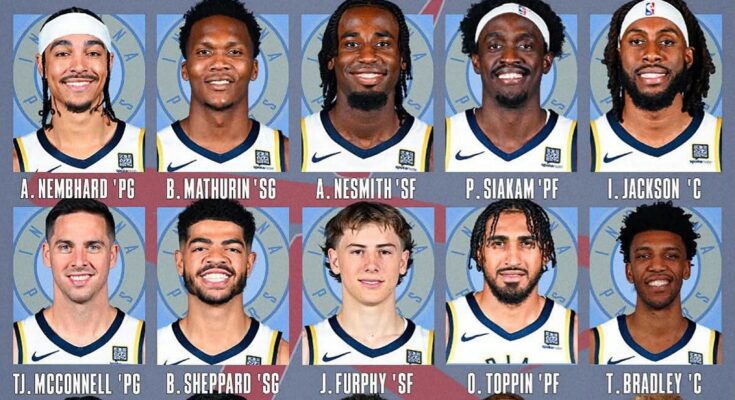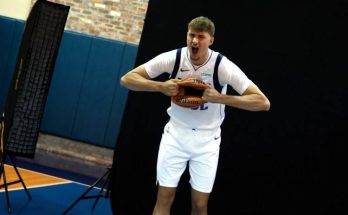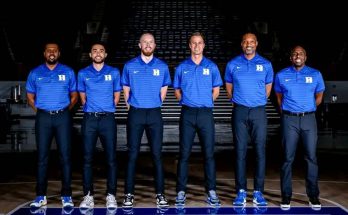The Indiana Pacers enter the 2025-26 NBA season with a depth chart that reflects both continuity and growth, built around the core of Tyrese Haliburton and a roster that has steadily developed under the team’s front office. The Pacers have found themselves in an interesting position in the Eastern Conference: talented enough to compete with top contenders, but still looking for that extra piece to make a championship run realistic. With a lineup blending established stars, emerging young players, and valuable role contributors, the depth chart provides a clear picture of how the Pacers expect to attack the season.
At point guard, Tyrese Haliburton remains the cornerstone of the franchise. He is the engine of the Pacers’ offense, a gifted passer who can read defenses and create opportunities for his teammates while being an improving scorer himself. Haliburton’s ability to orchestrate the pick-and-roll, push the tempo in transition, and shoot with efficiency makes him one of the best young guards in the NBA. Behind him, T.J. McConnell continues to serve as a reliable backup. McConnell brings energy, hustle, and a steady hand to the second unit, offering a completely different pace but one that keeps the team’s offense organized. The Pacers also have Ben Sheppard, who has shown flashes as a combo guard and gives them some flexibility in guard rotations.
At shooting guard, the Pacers boast the high-flying Bennedict Mathurin, who has the potential to become one of the league’s better scorers. Mathurin’s aggressive mindset, slashing ability, and growing three-point shooting make him a dynamic backcourt partner for Haliburton. Together, they provide a combination of playmaking and scoring that keeps defenses on their toes. Veteran sharpshooter Buddy Hield, though his role has fluctuated in recent seasons, remains a valuable depth piece with his elite perimeter shooting. If the Pacers want instant offense off the bench, Hield can still provide it. Andrew Nembhard is another important name here, capable of playing both guard spots. His defensive intensity, ability to knock down timely shots, and growing confidence in running the offense make him one of the Pacers’ most versatile backcourt players.
The small forward spot is anchored by Aaron Nesmith, who has blossomed into one of Indiana’s most valuable two-way players. Nesmith’s defensive versatility allows him to guard multiple positions, while his reliable shooting and off-ball movement complement Haliburton’s playmaking. He brings toughness and unselfishness that fit perfectly into the Pacers’ system. Behind him, Mathurin or Nembhard can slide over depending on matchups, and the Pacers may also experiment with larger lineups featuring Obi Toppin or even Pascal Siakam at the three in certain situations. Rookie and developmental wings also factor in, giving the Pacers the ability to mix and match depending on the opponent.
At power forward, Pascal Siakam is the marquee name. Acquired to bolster the Pacers’ frontcourt, Siakam’s combination of scoring, rebounding, and defensive versatility makes him a perfect fit next to Haliburton. Siakam thrives in transition, can create his own shot in half-court situations, and provides veteran leadership for a relatively young team. Obi Toppin continues to serve as a valuable contributor off the bench. Toppin’s athleticism, energy, and floor-spacing ability have made him a strong rotation piece, and he has grown into a more consistent offensive threat while improving defensively. This gives Indiana multiple options at the power forward spot, from an established star in Siakam to an energetic reserve in Toppin.
The center position is manned by Myles Turner, the longest-tenured Pacer and one of the league’s best shot blockers. Turner’s rim protection is a backbone of Indiana’s defense, while his ability to stretch the floor with his three-point shooting makes him an ideal modern big man. His chemistry with Haliburton in pick-and-roll and pick-and-pop situations continues to be a key feature of the Pacers’ offense. Behind Turner, Jalen Smith provides quality minutes with his rebounding and inside scoring, while Isaiah Jackson adds rim-running, shot-blocking, and athleticism off the bench. The Pacers’ depth at center ensures that they can withstand injuries or foul trouble without sacrificing much interior presence.
When looking at the Pacers’ depth chart holistically, it’s clear that their rotation is built around balance and versatility. They have a franchise player in Haliburton, a rising star in Mathurin, a proven All-Star in Siakam, and a defensive anchor in Turner. Around them are role players who know their jobs and execute them effectively. McConnell, Hield, Nembhard, Nesmith, and Toppin all give the Pacers different skill sets that complement the team’s stars, while the young bigs Smith and Jackson add depth and upside in the frontcourt.
The strength of this roster lies in its adaptability. The Pacers can go small, playing Siakam at center and surrounding him with shooters to space the floor. They can go big, pairing Turner with Siakam and Nesmith to create a strong defensive frontcourt. They can play fast, led by Haliburton’s passing and Toppin’s rim-running, or slow the pace and rely on Siakam’s half-court scoring. The depth chart shows a team that can tailor its lineups to different opponents and situations, a key factor in playoff basketball.
Of course, no depth chart is perfect, and the Pacers still face challenges. One question is whether Mathurin will take the leap from promising scorer to consistent star. If he does, the Pacers’ ceiling rises significantly. Another question is how much more Siakam can elevate the team; while he is a proven All-Star, the Pacers need him to be a reliable closer in big games. There are also concerns about the second unit’s consistency, especially with Hield’s uncertain role and the reliance on young bigs like Smith and Jackson. Depth is valuable, but it must translate into reliable production across an 82-game season and into the playoffs.
Still, the overall construction of the Pacers’ 2025-26 depth chart shows a team that has successfully blended development with roster building. Haliburton is locked in as the leader and face of the franchise, Siakam adds a proven veteran presence, and Turner remains a foundational piece. Around them, players like Mathurin, Nesmith, Nembhard, and Toppin are in the stages of their careers where improvement is expected, giving Indiana internal growth opportunities. Meanwhile, McConnell and Hield provide veteran stability when needed.
The Eastern Conference remains highly competitive, with teams like the Boston Celtics, Milwaukee Bucks, and Miami Heat consistently in the mix, but the Pacers’ depth chart shows that they belong in that conversation. They may not have the top-heavy star power of Boston or Milwaukee, but their balance, chemistry, and versatility give them a chance to compete on any given night. The Pacers’ success in 2025-26 will hinge on their ability to maximize that depth, stay healthy, and continue to develop their young core while leaning on the veteran stars to deliver in big moments.
In many ways, this roster is the culmination of Indiana’s patience and smart decision-making. Rather than rushing into moves, the Pacers have allowed Haliburton to grow into a franchise player, found complementary pieces in the draft and through trades, and made a calculated decision to bring in Siakam as the missing piece. The result is a depth chart that feels cohesive, with clearly defined roles and enough flexibility to adapt to the challenges of a long season.
By the time the season tips off, the Pacers’ depth chart will likely continue to evolve, as players earn or lose minutes and as the front office monitors trade opportunities. But as it stands, the Pacers look like a team built for sustained competitiveness, capable of making noise in the playoffs if things break their way. Their 2025-26 depth chart is a reflection of a franchise on the rise, one that has the potential to transition from promising upstart to legitimate contender if everything comes together.



